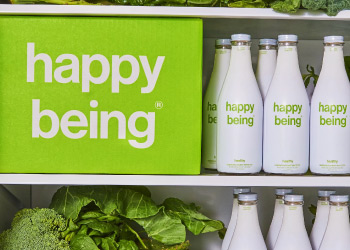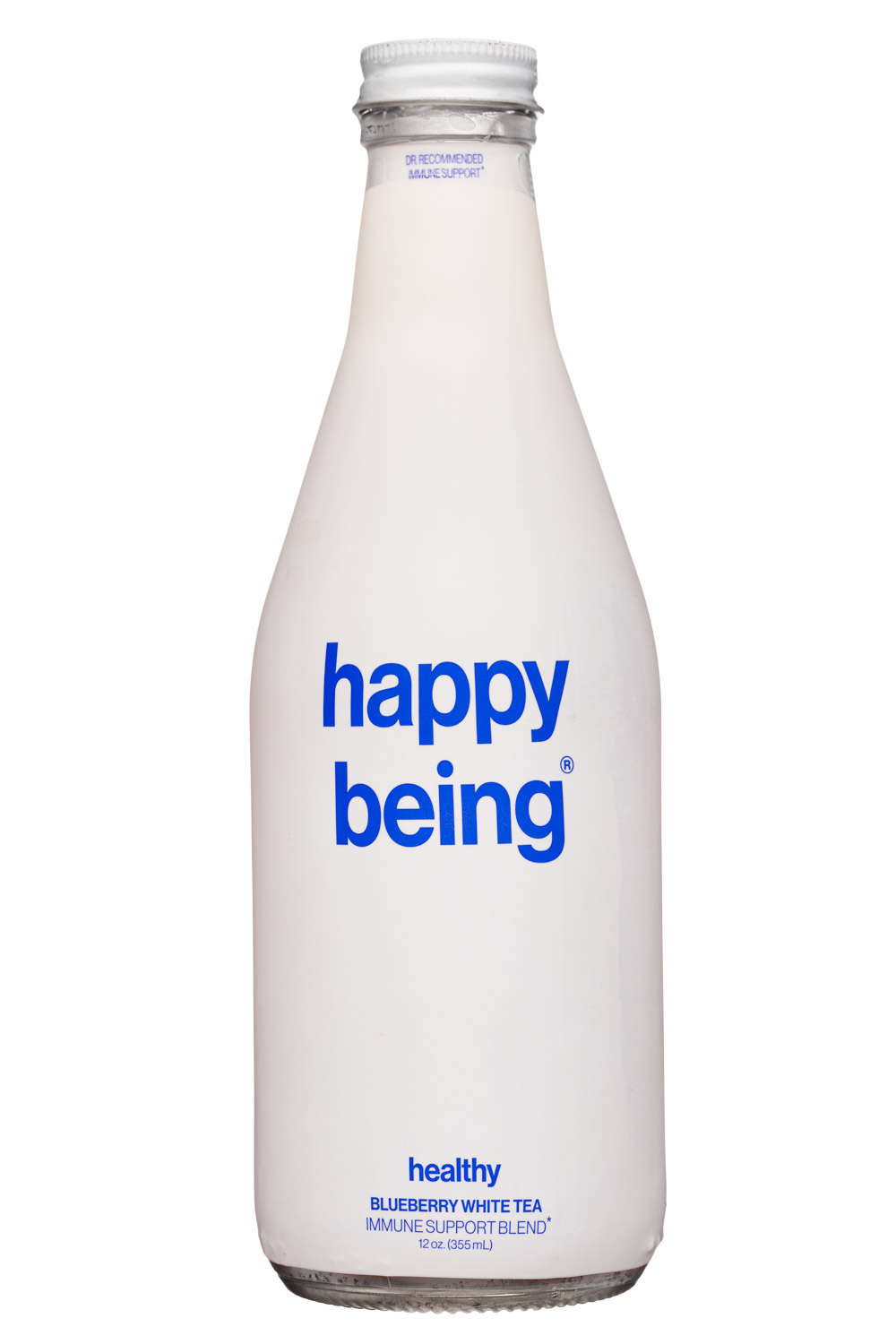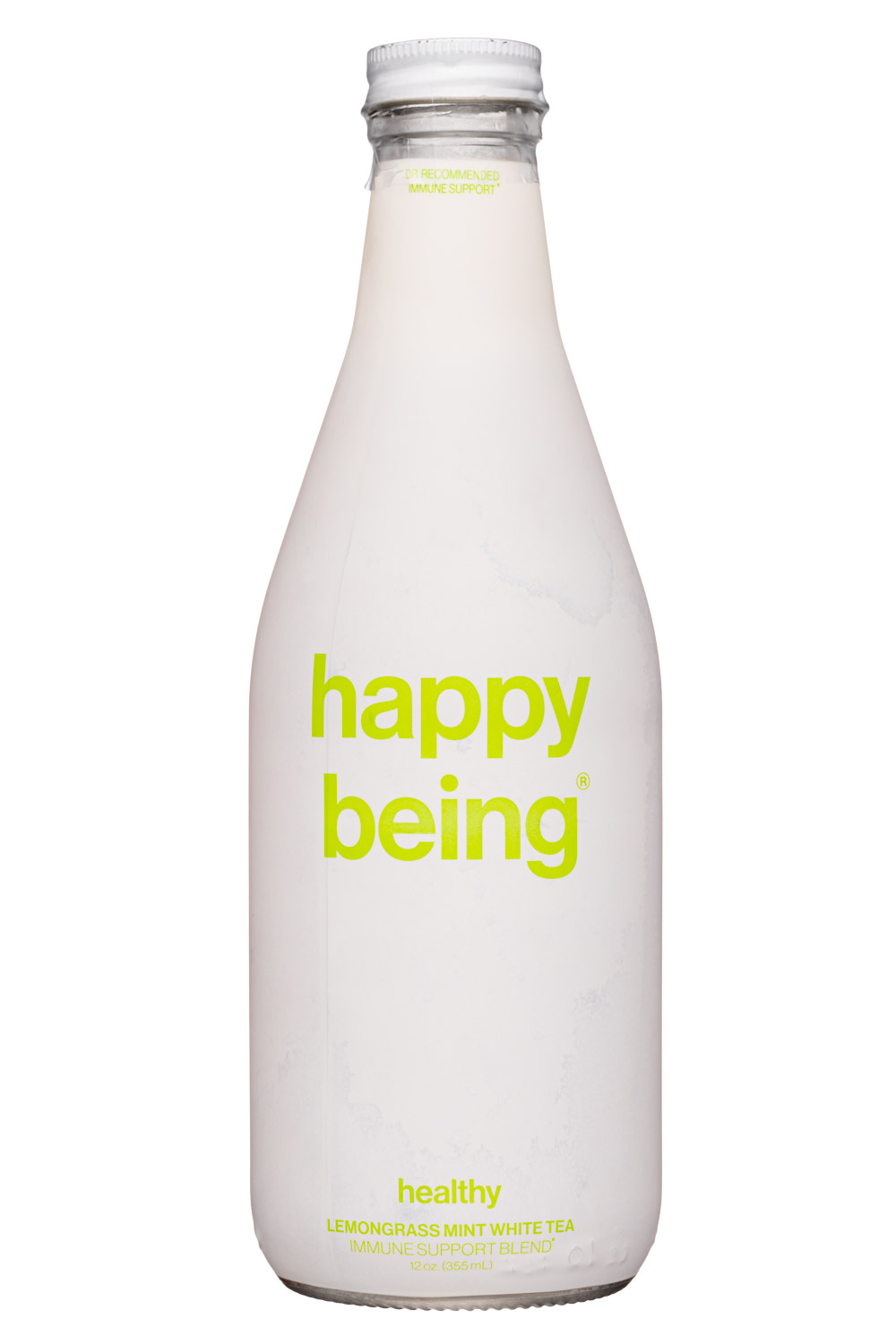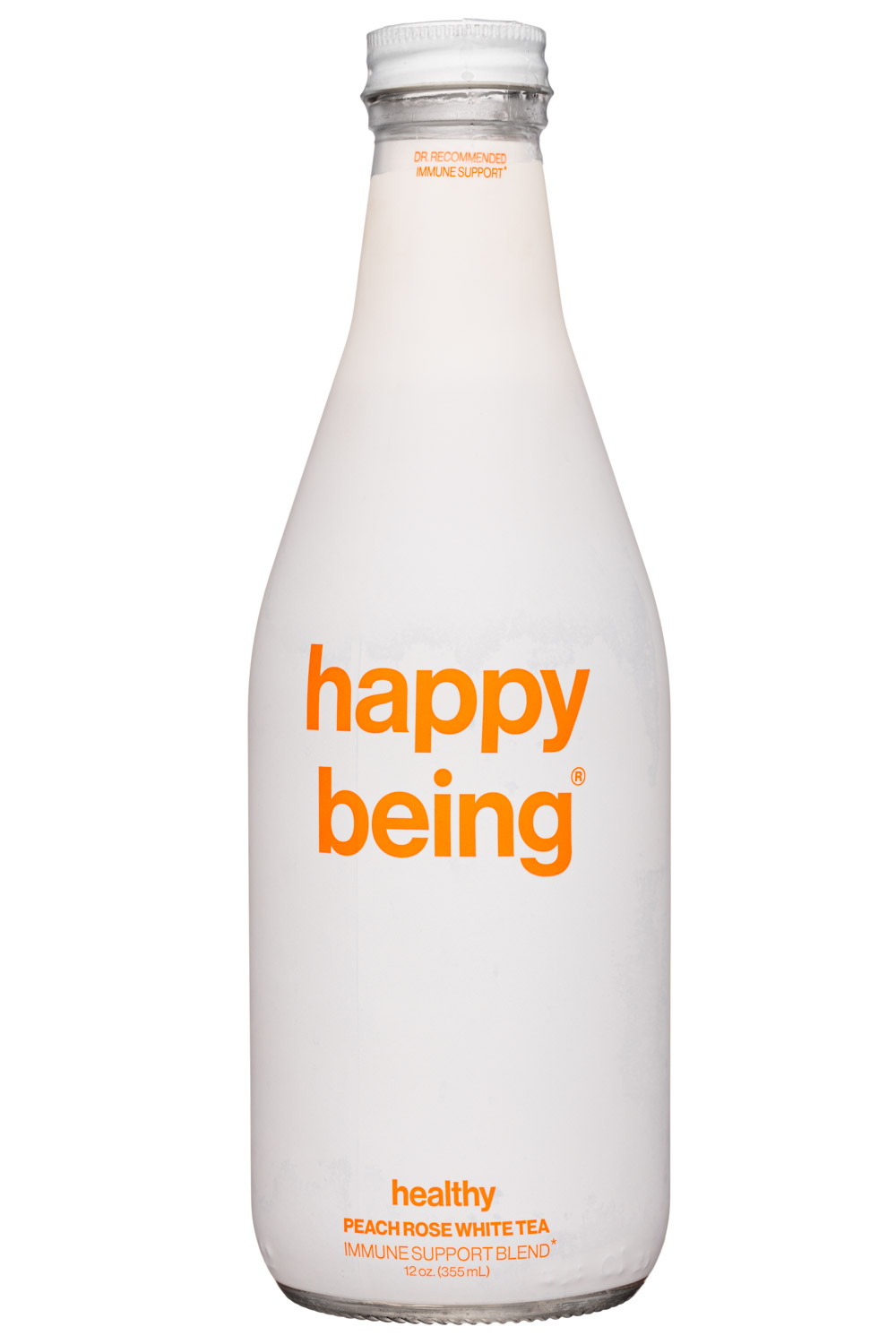Happy Being
by Healthy Human Teas, LLC
Review: Happy Being
Covers Products: Blueberry White Tea, Lemongrass Mint White Tea, Peach Rose White Tea
Happy Being is a line of doctor-created functional beverages that are made with white tea and enhanced with antioxidants, elderberry and Turmacin (a form of bioavailable turmeric). The products are low in sugar and calories and are packaged in 12 ounce glass bottles.
The product line presently features three SKUs, including Lemongrass Mint White Tea, Blueberry White Tea and Peach Rose White Tea. All three are sweetened with cane sugar (2 grams of added sugar) and monk fruit and have 20-35 calories depending on the variety and 2 grams of sugar per 12 ounce bottle.
The functional ingredients include 100mg of elderberry powder, 35mg of Turmacin, 35mg of green tea extract, 50mg of trans-pTerostibene (according to the label, the equivalent of 962 cups of blueberries) and vitamin D (45% RDA).
Across all three varieties, Happy Being’s flavor is very much that of a functional beverage. While there are decent notes of tea, the flavor is lighter than what you’ll find in your typical RTD premium tea. Part of this is certainly due to the use of white tea, which has a more subtle flavor than black or green tea and also appears to mask the monk fruit flavor a bit less.
Of the three flavors, we found Lemongrass Mint to be the best. The flavorings are accurate and mesh well with the rest of the formulation. In contrast, the fruit flavors are great for brand appeal, but they taste a bit too much like flavorings and less like the real thing. We’d suggest refining these or going more in the direction of Lemongrass Mint.
When it comes to the branding, Happy Being has created something that is aesthetically clean and catches the eye thanks to its vibrant but minimalistic design. The label looks uncluttered and chic, while the brand name is both intriguing and emits a positive vibe.
Happy Being looks nice, but we don’t think they’ve done a great job of communicating what the product is or appealing to the senses. If you see this from anything other than up close you’ll probably ask “what is it?” just as we did when we first saw it.
The flavor name is down near the bottom of the label (the part that would be covered if this product ever ends up in a glide rack) and even then it’s sandwiched between “healthy” and “immune support blend.”
From our perspective, any product that is so overtly trying to sell you on functionality and not on its merits as a beverage is going to lose out to competitors who do just that. There’s a long history of trying to market doctor created/recommended beverages and they generally don’t sell well in the long run. We would strongly advise making this much more subtle.
Two final technical notes on the packaging. First, we question the very heavy glass bottle that they are using and the apothecary style cap (which requires plastic over it). This not only probably adds cost to shipping and breakage, but it also feels like something that undermines the polish of the brand. Second, the green used on Lemongrass Mint White Tea is too light and, especially if the bottle has condensation on it, can be very difficult to read.
In the end, we think that Happy Being is a good concept, but the execution of the liquid and the approach to the messaging aren’t quite there yet. If they can improve the flavor and figure out a softer way to communicate the drink’s functionality, we think that what they’ve created would be a lot more marketable.






